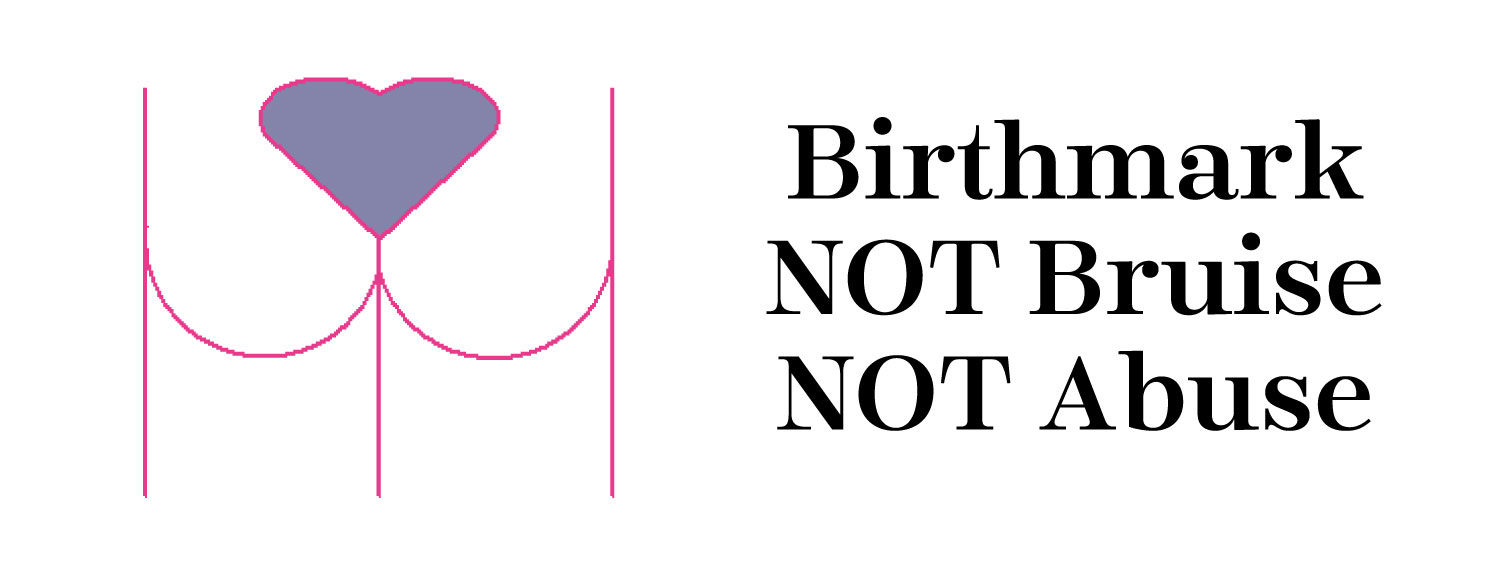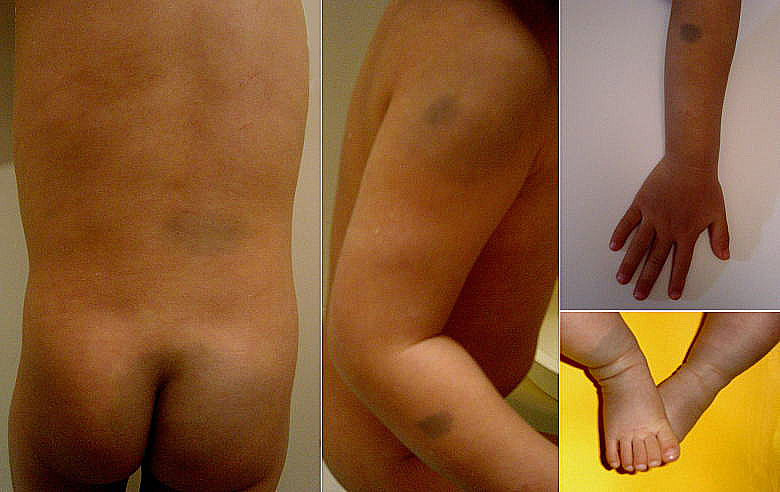
Alternative Names:
Mongolian blue spot, child fleck, sacral fleck, newborn blue fleck, newborn sacral blue fleck, Semitic mark, Semitic stain, congenital dermal melanocytosis, dermal melanocytosis
Mongolische Flecken (G), tache mongolique (F), mancha mongolica (S), Moukohan (J)
Forms:
Mongolian spots are blue, bluish-gray, bluish-green or blue-black flat skin markings that appear at birth or shortly thereafter during the infantile age. The edges are usually indistinct and the shapes are irregular. The sizes and the numbers are various.
Distribution:
Mongolian spots are mostly located at the base of the spine, on the lower back and buttocks. They can also appear on the shoulders, upper back, arms, wrists, legs, ankles, lateral abdomen and elsewhere. Palms, soles, face and head are usually spared.
Variants:
- Persistent Mongolian spots are larger and have sharper borders. They may persist for many years.
- Deep blue Mongolian spots are deeper colored and have sharper borders. They may persist as long as persistent Mongolian spots.
- Ectopic Mongolian spots or aberrant Mongolian spots involve unusual areas such as the face or extremities.
Incidence:
The prevalence of Mongolian spots varies among different ethnic groups according to the overall depth of pigmentation. Mongolian spots are common among Asian, East Indian, and African races, but rare among Caucasian and other races. Reported incidences in representative ethnic infants are as follows:
Asian: 95-100%, East African: 90-95%, Native American: 85-90%, Hispanic: 50-70%, Caucasian: 1-10%
Causes:
Mongolian spots are caused by entrapment of melanocytes in the dermis during their migration from the neural crest into the epidermis in fetal development. Microscopically dermal melanocytoses are seen in all newborn babies irrespective of race.
Differences in the number of dermal melanocytes may cause the racial variation.
Prognosis:
The bluish discolorations usually fade after a few years and almost disappear between age 7 to 13 years. Therefore, no treatment is required in most cases.
Differentials:
Blue nevi, nevi of Ota, and bruises should be differentiated.
Occasionally, Mongolian spots are mistaken for bruises caused by child abuse. Careful observation by a specialist will easily allow differentiation.
It is important to recognize that Mongolian spots are birthmarks, NOT bruises.


- Common Mongolian spots
These will disappear within 10 years. - Deep blue Mongolian spots
In these pictures all deep blue spots are ectopic and may become persistent Mongolian spots which remain until adulthood. - Ectopic Mongolian spots,aberrant Mongolian spots
In these pictures all spots are thin and will disappear in within a few years.
The green triangle indicates the so-called ‘hot spot’ of Mongolian spots. Most common spots appear in this area. Some other spots may appear in other regions such as the shoulders, upper back, arms, wrists, legs, ankles, lateral abdomen and elsewhere.
All spots are observed in the same 2-year-old normal Japanese female infant.
| - | Mongolian spot | Bruise by abuse |
|---|---|---|
| Location |
Frequent:
base of spine, lower back, buttocks Often:shoulders, upper back, arms, wrists, legs, ankles, lateral abdomen Rare:palms, soles, face, head |
Frequent:
buttocks, face Often:anywhere |
| Color | Blue, bluish-gray, bluish-green, blue-black |
Color changes over time:
red-purple → |
| Shape | Usually irregular and edges are indistinct | Often reflects shape of object used, such as hands or belt |
| Number | One or several | Usually many sometimes clustered mix of various healing stages |
| Presence | Usually present at birth | Regularly appear after |
| General | Normal |
absence, weekends or vacations
Nervous, anxiety, scared,
short stature, taciturn,
undernourishment,
other injuries (black eyes, burns, humerus fractures, tibia fractures, ligatures) |

